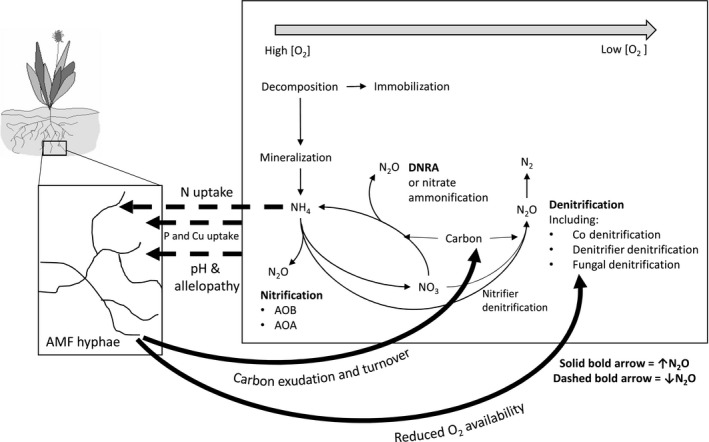Figure 5.

Summarized potential interactions between arbuscular mycorrhizal fungal (AMF) hyphae and soil nitrous oxide (N2O)‐producing processes as described in Baggs (2011) and Zhu et al. (2013). The solid and dashed bold lines represent AMF effects that could result in an increase and decrease in N2O production, respectively. AMF can affect the availability of nitrogen (N), phosphorus (P), copper (Cu) and iron (Fe) in soils, as well as potentially changing soil pH. Nitrifier nitrification is generally carried out by ammonia‐oxidizing bacteria (AOB) and archaea (AOA). Dissimilatory reduction of nitrate to ammonium (DNRA) may produce N2O as a side product. DNRA is also known as nitrate ammonification. There are various pathways and organisms capable of carrying out these roles, but, for simplicity, they are grouped by factors affecting the rate of N2O production (i.e. availability of O2, or carbon).
